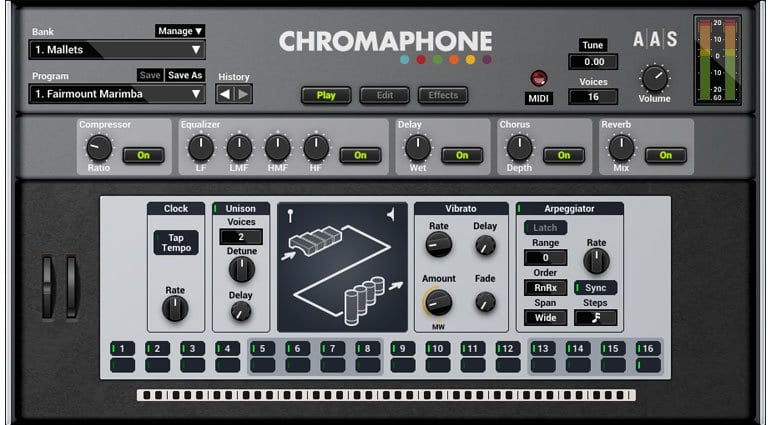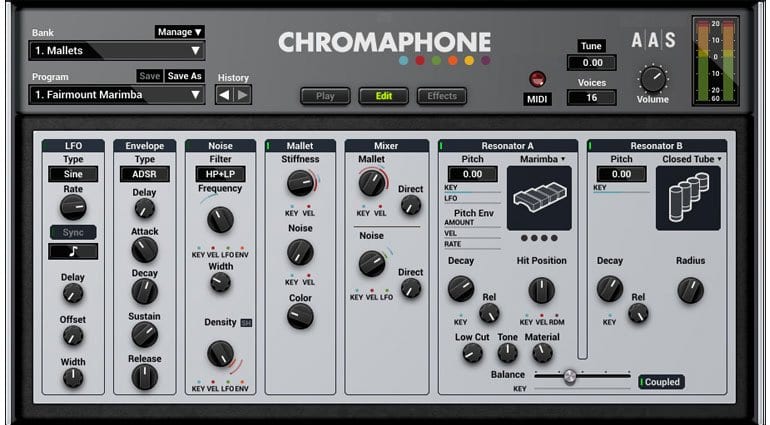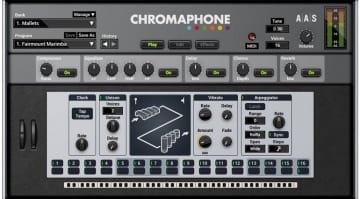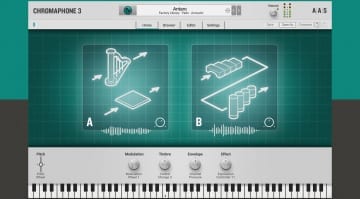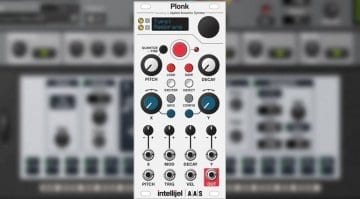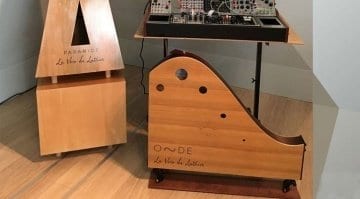Applied Acoustics mix resonators with Chromaphone 2
Applied Acoustics are masters both of acoustic modelling and the long game, meaning they let eons pass between releases of new products. And so it’s quite exciting to hear about something new coming out of their Montreal labs. Chromaphone 2 builds on the original Chromaphone released in 2012 and brings with it a stack of new creative and more synthesiser-esque features.
For the uninitiated, acoustic modelling is not about samples or oscillators, it’s all about resonators. Resonators are a mathematical model of the material and shape of an instrument that causes the vibration that we hear as sound. So a model of a wooden bar makes a xylophone, a tube becomes a vibraphone, a plate becomes a bell or cymbal. Version 2 brings in a drumhead resonator which is more realistic and responsive than a plate when creating skinned and membrane instruments. The key feature of Chromaphone is its ability to build an instrument by combining two resonators. You can have the string and the soundboard of a guitar both loaded as resonators and then Chromaphone does the maths on how their vibrations interact and effect the sound. It’s all about creating lifelike instruments that respond exactly as they were meant to – and it’s about creating completely original instruments that may not even be possible in real-life. So if you want to cross a harp with a guitar, a violin with a bell or drum with a flute then this is where to do it.
Among the new features you have an envelope generator on the noise source for crafting precise one-shots along with a 10-band noise filter. The effects section has been overhauled and includes a new limiter, compressor and EQ. An arpeggiator has been built in to offer movement and perspective to the sounds and there’s support for Scala scales and microtuning. It’s all backwards compatible with the original version and comes with a new library of over 600 sounds.
Physical acoustic modelling has the potential to create lifelike and unique-sounding instruments but it’s certainly not everyone’s cup of tea. It has a certain style and way of being played that lends itself to this sort of sound generation. As it contains no samples it has a tiny footprint, taking up very few resources in terms of disk or processor. It’s available now for an introductory price of GBP £149 for Windows or OSX, VST, AU, RTAS, AAX and standalone.
More information: https://www.applied-acoustics.com/chromaphone-2/

